#igneous rocks
Text
“Yooperlite” on Lake Superior! These rocks are sodalite in syenite and the sodalite part glows when a long wave UV light is shined onto them! Hunting these is so much fun!!
📽️ By: Thecrystalcollector
Bryan Major
199 notes
·
View notes
Text
Rock Swag Tournament Round 1: Igneous Rocks Part 1


Pink or White?
Both of these rocks are GRANITE which means they are coarse-grained (phaneritic) rocks that contain at least 20% quartz and no more than 10% mafic minerals. The rest is some kind of feldspar. Mafic minerals are the black grains you see in the samples above and are most likely the minerals pyroxene, amphibole, or biotite.
(Want to learn more about igneous rocks and how we classify them? Click here for an igneous rocks introduction)
The distinction between these two granites comes with the type of feldspar contained in the rock.
The feldspar content in alkali granite is almost entirely orthoclase (aka k-spar or potassium feldspar). The pink grains in this rock are orthoclase crystals. Fun fact, my dad's headstone is an alkali granite and the specific variety used is called "North American Pink."

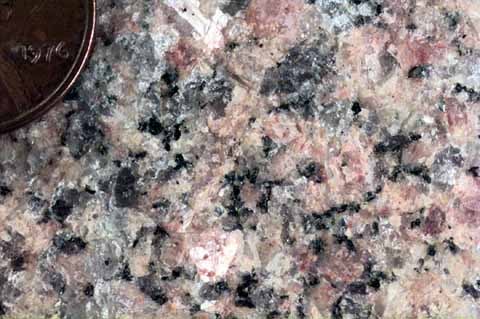
Other alkali granite samples.
The feldspars that make up plagiogranite (also known as tonalite) are almost entirely plagioclase feldspar, which contain calcium or sodium instead of potassium. These are typically dark grey to white in color. In this particular sample, the white grains are sodium feldspar (aka albite).
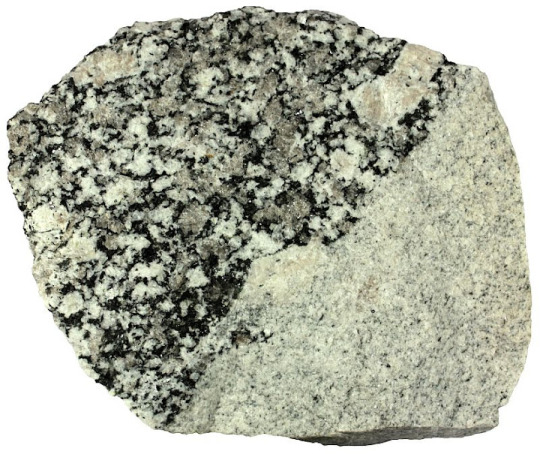

More tonalite/plagiogranite samples.
#i had to mention my dead dad because i love him so much it was not intended to sway anyone's vote#there are other headstone colors out there and many are tonalite or maybe even diorite#my family owns a headstone company but the companies don't usually say what minerals are in the rocks they use#they just have fun names. and also some of the granites used in things like headstones and countertops aren't technically granite#rock swag tournament round 1#rock swag tournament igneous rocks#geology#igneous rocks
102 notes
·
View notes
Text

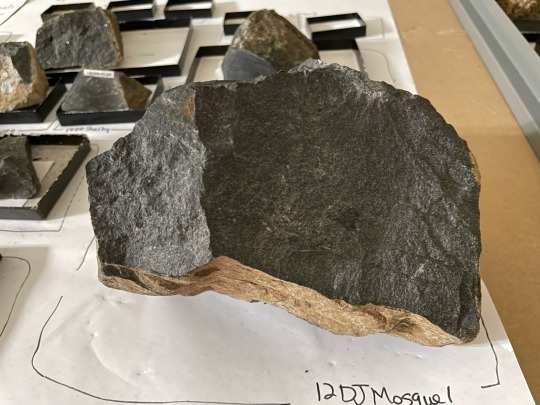


sample vs. thin section part two!
#science with sherrie#sherrie’s shit#geology#finished my petrology course w/ an A/93% 😎#very happy with myself#loved the class too :’)#petrology#igneous rocks#thin section#both thin sections taken at 2x/XPL#via leica petrographic microscope
55 notes
·
View notes
Text
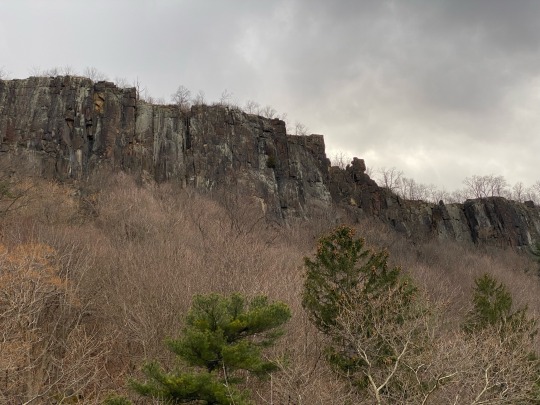
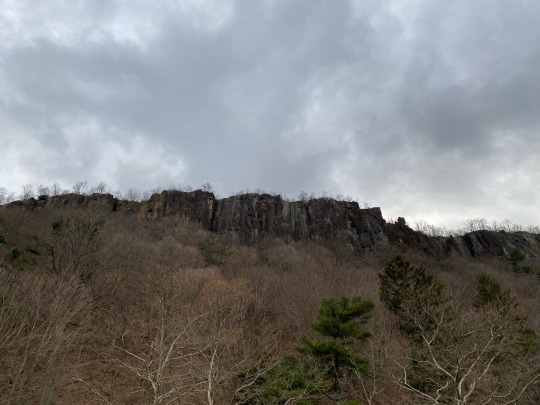
Not enough photos of the Palisades Sill on here!
Those 2 are my pics but they do not nearly represent how awesome she is. evidence:
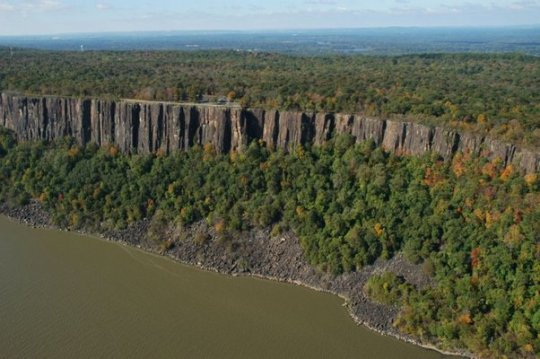
I love you earth, I love you time, I love you millions of years of erosion exposing giant sheets of intrusive igneous rock for me to gawk at
#there being 1 (one) photo on this site of this sill is messing me up#she’s so awesome#palisades sill#sill#geology#earth science#igneous rock#exposed sill#outcrop#cliffs#cliff#photography#nature#nature photography#third one is not my pic#earth#rocks#hudson river#new jersey#new york#intrusive igneous rock#igneous rocks#rockblr
9 notes
·
View notes
Text

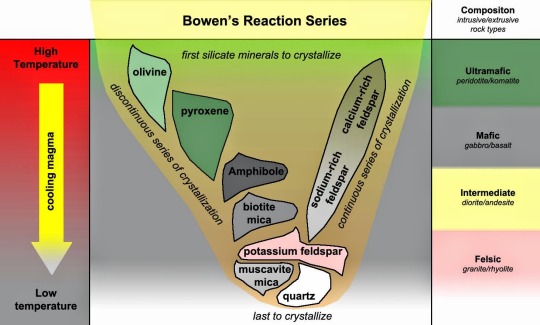
Remember that, per Bowen's reaction series, the cooling sequence between olivine and quartz is discontinuous. You don't get both minerals in the same rock! So choose wisely!
#geology#mineralogy#igneous minerals#igneous rocks#polls#geology polls#yes this was inspired by the feldspar post#but i literally have a t-shirt of the first graphic that says ''igneous is bliss''#because people love buying me silly geology-related things#(and i love them for it)#by popular demand#this is not a niche as it could be#almost went with stream evolution stages because that's permanently lodged in my head these days
44 notes
·
View notes
Text
Plutonic vs. Volcanic Textures.
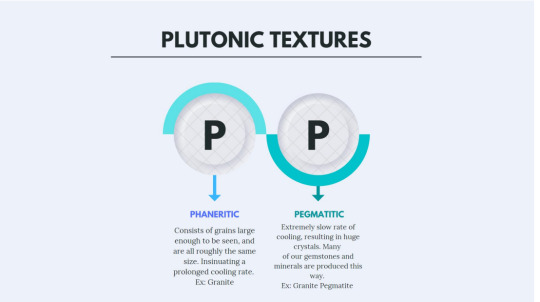
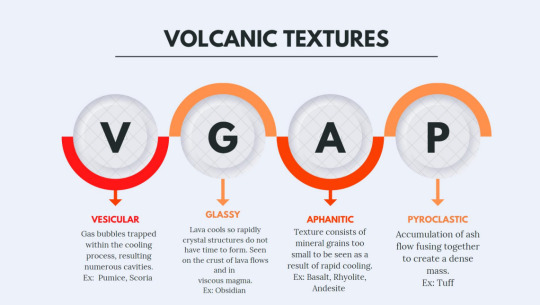
#geology 100#geo 100#geology 101#earth science#flow chart#free#worksheet#geology igneous#igneous rocks#rocks
5 notes
·
View notes
Text
(studying for my geology exam) porphyritic because por because- because it has big parts, which is like pores- this doesn't make any sense but I think it's gonna work
#pores#geology#porphyritic#rocks#igneous rocks#igneous#words#school#college#university#studying#school problems#mnemonic#silly mnemonics#exams#test#texture#rock texture#rock identification
2 notes
·
View notes
Text
The Earth is an active planet. Earthquakes shake and volcanoes erupt. Sections of the crust are on the move. Mountains push up and wear down. These and many other processes contribute to the rock cycle, which makes and changes rocks on or below the Earth’s surface. The Earth is 4.6 billion years old, but you won’t find rocks that old because they have been recycled into younger rocks.
Rocks are made of minerals, which are made of specific chemical elements. For example, the mineral quartz is made of the elements silicon and oxygen. The rock called granite consists mostly of the minerals quartz, feldspar and mica.
There are three main types of rock – igneous, sedimentary and metamorphic.
#studyblr#geography#geology#chemistry#physics#rocks#minerals#quartz#granite#feldspar#mica#igneous rocks#sedimentary rocks#metamorphic rocks
0 notes
Text
Mysterious Rocks: Some rocks exhibit unusual properties or phenomena. For example, lodestone is a naturally occurring magnet, while fulgurites are rocks formed from the fusion of sand by lightning strikes. Read more here:
23 notes
·
View notes
Text
An Igneous Rocks Primer, for Interested Parties
First off, what even is an igneous rock?
Put simply, igneous rocks are rocks made from molten material. We call the molten material lava when it is on the earth’s surface and magma when it is below the earth’s surface. When it has cooled and hardened, we call it an igneous rock!
There are 24 different types of igneous rocks in the tournament (and many more not in the tournament!). How do you tell them all apart?
I’m so glad you asked. We generally classify igneous rocks using two criteria: texture and composition.
More below the cut!
Texture, what does that mean?
There are a few forms that igneous rocks typically come in, and they have to do with how the magma or lava cooled and hardened.
Aphanitic (fine-grained) rocks are igneous rocks where you cannot see individual mineral grains with the naked eye. You would need a microscope to see the individual crystals. Aphanitic rocks form when a lava cools above the earth’s surface. For example, the lava that erupts from Mauna Loa and makes up the island of Hawai’i cools relatively quickly, and minerals do not have time to form large grains.

They cool quickly relative to what? Relative to phaneritic (coarse-grained) igneous rocks!
With phaneritic rocks, you CAN see the individual crystals making up the rock—like granite. Phaneritic rocks cool deep in the earth’s crust, rather than on the surface from a volcanic eruption. Magma chambers within the crust are insulated and therefore cool much slower than lava exposed to air or water at the earth’s surface. This slow cooling gives the minerals the time they need to crystallize and form grains big enough for us to see.
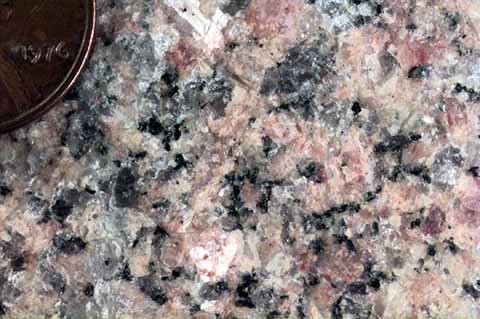
While aphanitic and phaneritic refer to the texture of the rock (fine-grained and coarse-grained), you will often hear rocks with an aphanitic texture being called “extrusive” rocks and rocks with a phaneritic texture being called “intrusive” rocks.
This is because the texture and size of mineral crystals directly correlates with how quickly the melt cooled, which correlates with where the rock originated. Extrusive rocks form quickly on the earth’s surface (externally) during events like volcanic eruptions. Intrusive rocks form slowly beneath the earths surface (in the crust) from bodies of magma (plutons) in the crust.
Some other igneous textures are:
Glassy (like obsidian) which happens when a lava cools extremely quickly even compared to aphanitic rocks.

Vesicular (like pumice) which happens when a lava cools very quickly, while gasses are creating bubbles in the lava, so the rock forms with holes (called vesicles).
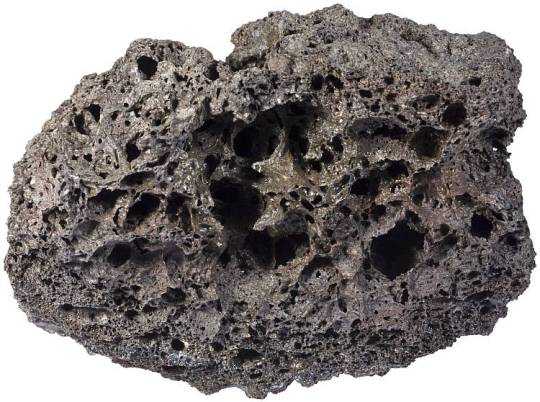
Porphyritic (there isn’t really a universally known example, except for maybe the rhomb porphyry) which happens when a magma cools in two stages. Different minerals crystalize at different temperatures (more on that later), so this rock looks like an aphanitic rock with isolated crystals (called phenocrysts). The most effective way I have ever heard this described is as a “chocolate chip cookie rock” because the phenocrysts look like the chocolate chips in the aphanitic cookie.
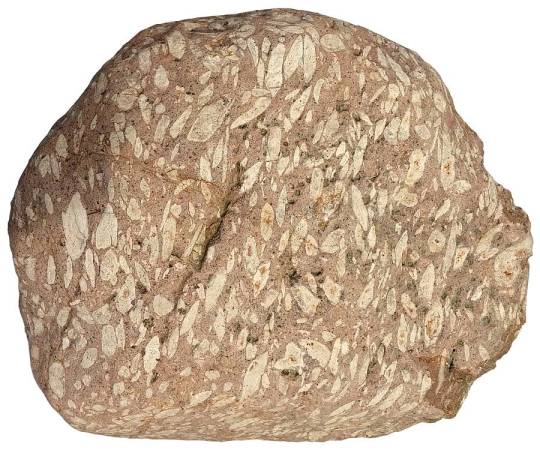
Okay, that was a lot, what about composition?
There are different minerals that make up the different types of rocks. There are about eight minerals that commonly make up igneous rocks and we use their relative abundances to define igneous rock compositions!
We describe igneous rock composition using a few words: ultramafic, mafic, intermediate, and felsic.
To understand what these words mean, I would like to introduce Bowen’s Reaction Series!
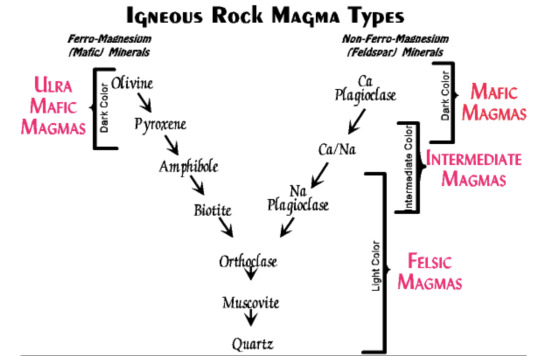
This image (and the image of granite shown above) are from this site which is an absolutely INCREDIBLE source for all kinds of geology information.
This diagram is organized based on the relative crystallizations temperatures of these minerals.
So, looking at Bowen’s Reaction Series (thanks, Norman Bowen!) minerals at the top (olivine and calcium (Ca) plagioclase) crystallize at higher temperatures than minerals at the bottom (quartz). Olivine crystallizes at a higher temperature than pyroxene, which crystallizes at a higher temperature than amphibole, and so on. Compare this to iron and water. Iron requires a lot more heat to become a liquid than water does. Similarly, olivine requires more heat to become molten than quartz does.
So, what does this have to do with ultramafic, mafic, intermediate, and felsic rocks?
Ultramafic rocks (like peridotite) contain almost entirely the minerals on the top left: olivine and pyroxene. These minerals contain a lot of iron and magnesium. Ultramafic magmas originate from the mantle.
Mafic rocks (like basalt) contain mostly minerals towards the top of Bowen’s Reaction Series: calcium (Ca) plagioclase, olivine, pyroxene, amphibole, and biotite. The minerals on the left branch contain magnesium and iron, while the minerals on the right branch do not. The parts of earth’s crust that make up the ocean floor (the oceanic crust) are mafic.
Another convenient pattern: all the minerals at the top of the reaction series (the mafic and ultramafic minerals) are dark in color.
Felsic rocks (like granite) contain mostly minerals on the bottom of the reaction series: quartz, muscovite, orthoclase, and sodium (Na) plagioclase. These minerals are, conveniently, light in color and lack iron and magnesium. The parts of earth’s crust that make up the continents (the continental crust) are felsic.
Intermediate rocks (like diorite) contain some dark/mafic minerals and some lighter/felsic minerals and therefore have a color somewhere in the middle. These rocks typically form above subduction zones, where the oceanic crust gets pushed under the continental crust (for example, on the west coast of the United States).
Wow. I knew you were long winded, but that was intense.
Yeah, thanks for sticking with me. It’s a lot of background to get to the point which is: we use two criteria to classify rocks.
Granite is a phaneritic (coarse-grained) felsic (light colored) rock.
Basalt is an aphanitic (fine-grained) mafic (dark colored) rock.
Diorite is a phaneritic intermediate rock.
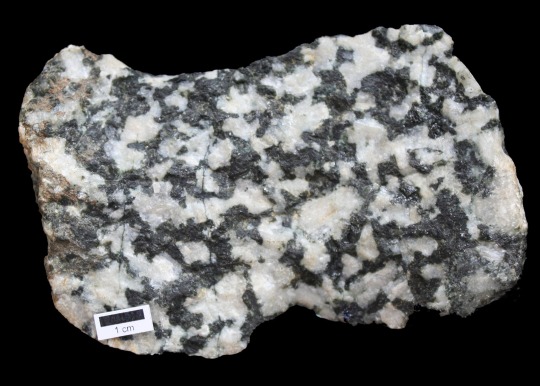
Here's diorite, by the way. See how it's half dark rocks and half light rocks?
Oh and one last thing, porphyritic rocks?
Right, now that you know about Bowen’s Reaction Series, it might make more sense to you that you could have pyroxene crystals (that crystalized over a long period of time) floating in a more felsic magma, which has not yet cooled because the temperature may be low enough for pyroxene to crystallize, but not for the minerals lower on Bowen’s Reaction Series to crystallize. If this magma were then to erupt, the magma would cool fairly quickly and form an aphanitic rock, but it would still have these pre-crystallized pyroxenes visible.
—————
Anyway, I wanted to throw this together so you all can at least have a reference (if you want it. If you want to vote based on rock pretty, I would be foolish to stop you) when I say things like “granite is a phaneritic felsic rock.”
If you want even more information about different volcano and eruption types and the rocks they produce, there will be a link to click here coming soon (don't ask me how soon, but feel free to send questions in the meantime!)
65 notes
·
View notes
Text
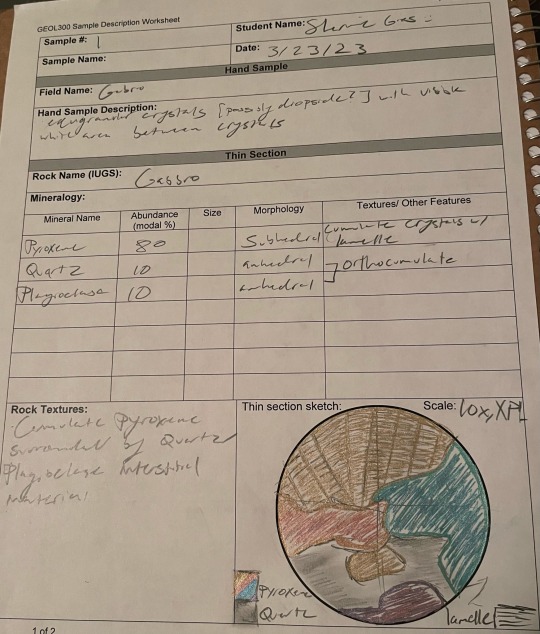
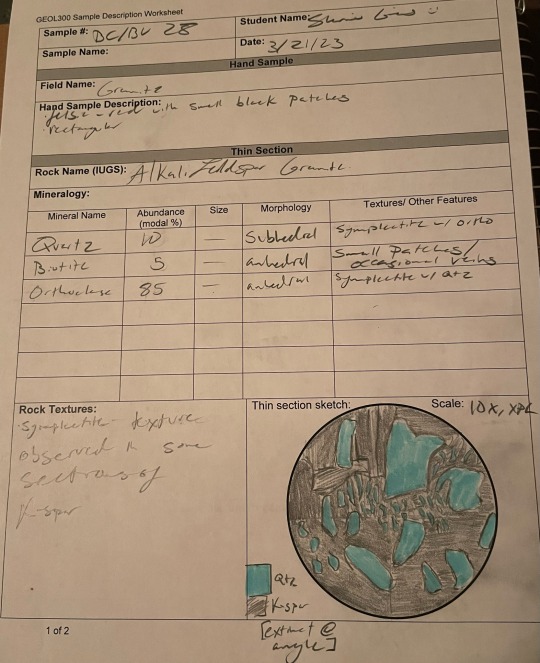

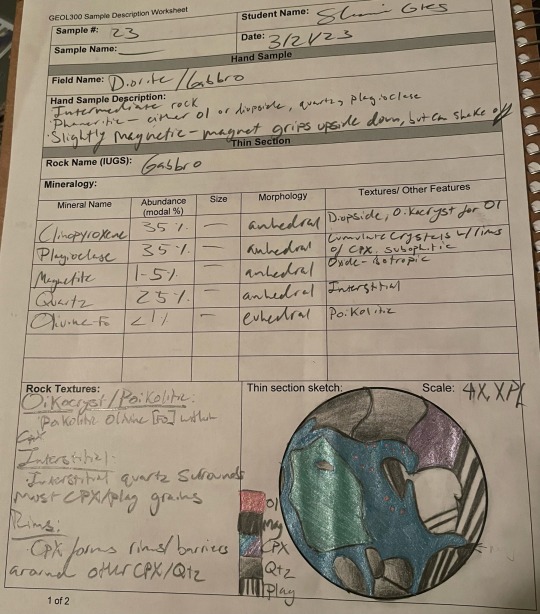
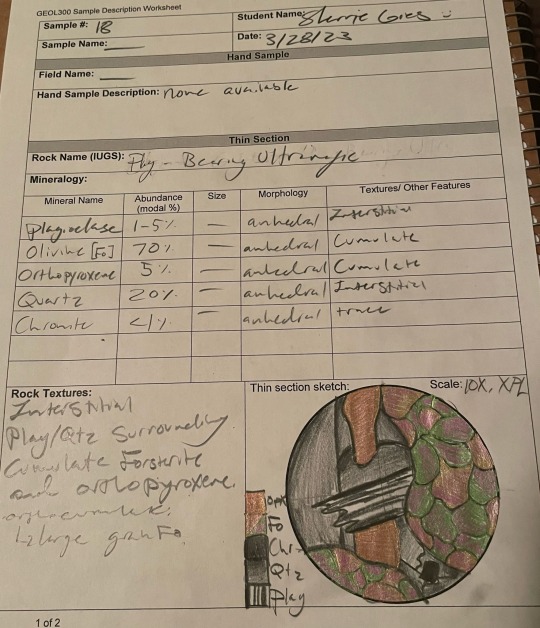
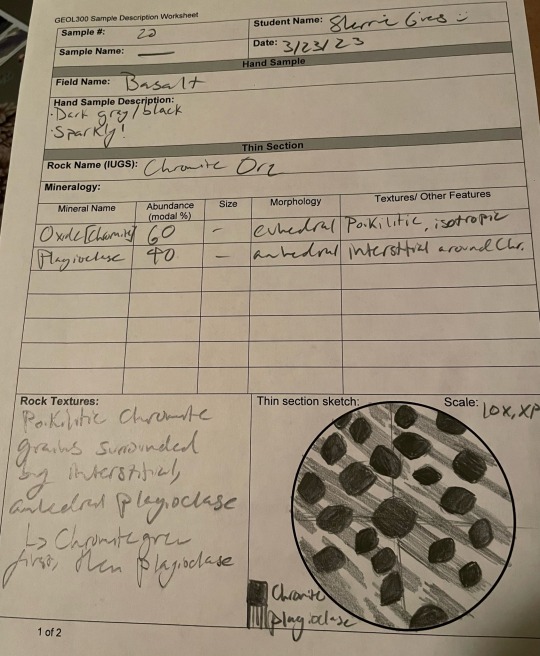
more thin sections!
a good chunk of geology courses require drawing, whether it’s cross-sections, hand samples, or thin sections! these are sample descriptions of each of the six samples I looked at for my most recent lab. I just finished a lab that dealt with samples from the south africa bushveld mafic intrusion, and with how many people seemed to like the thin sections I posted a week or so ago, I figured I’d show these, too!
#did I wait to post this until I knew for certain these were right? yes#but I got a 97.5% on it so 😎#geology#thin sections#petrology#igneous rocks#science with sherrie#sherrie’s shit
4 notes
·
View notes
Text

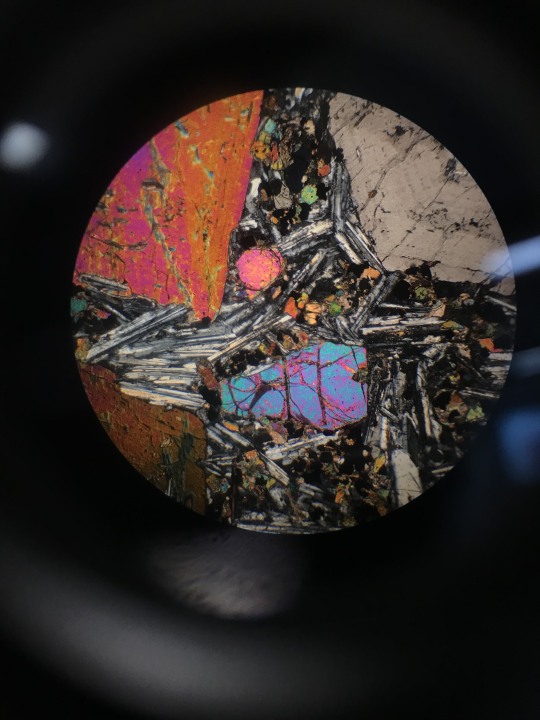
two pretty views on gabbro thin section in crossed polarised light
#hiyutekivigil#personal#rocks#gobbro#thin section#cpl#crossed polarised light#microscope#earth science#geology#university#studyblr#study inspo#academia#academia aesthetic#stem#stem academia#igneous rock#volcanoes
414 notes
·
View notes
Text
Minecraft feels like it doesn’t know what to do for big updates any more so they’re doing like small miscellaneous updates collected together. I wish they’d move on from trying to give them a theme bc I feel like that’s just confusing.
One thing I wish they’d do is do updates from time to time and go back and add pieces to old update. Like maybe add more fish or tree types.
Specifically what made me have this thought is that I’d love if they’d add more to the geodes. Like the amethysts are lovely but I’d love if there was a whole range of crystals to find in geodes!! I feel like that’s along the line of the archaeological stuff they’ve done recently! Digging into the earth for history and stuff!
Also if they ever do a forest update I’d freak out. I’d love if they revamped their nature bc I feel like that part of the over world specifically has been the same since the beginning era of minecraft. Like ocean, nether, caves, villages, NOW FOREST. And end.
Feels like natural progression of their universe growing! And I like feeling like the updates can have a “story” like aspect to me. Especially bc worldbuilding. Favorite idea when it comes to minecraft lore
#mineblr#Minecraft#Minecraft game development#Minecraft updates#minecraft lore#minecraft worldbuilding#minecraft caves#minecraft crystals#ROCKS ROCKS AND MORE ROCKS#like if they could add to the andesite granite diorite thing too with like limestone and other minerals#MINERAL ROCK UPDATE#GEOLOGY UPDATE#they could add like volcanic and igneous rocks to the nether??? l#I like this idea very very much#minecraft and game development are my special interests#and worldbuilding but that’s like a part of those and my storytelling spins#I feel like there’s some things in minecraft that people love to add thru mods that mods shouldn’t be necessary for#like more biomes! I get biome design or unique biomes but give plains and forests more flavor!#or forest animals! OR BUGS ADD BUGS#I get mods for dungeons or cute decoration but simple worldbuilding shouldn’t need mods#I’m getting frustrated with being dissatisfied with vanilla minecraft when all I want are more variability to blocks and biome expansion!#often times mods are too complex and add too much over vanilla minecraft when I like vanilla minecraft#it’s just after all this time especially with cave and cliffs added the nature feels behind and too simple
261 notes
·
View notes
Text
#poll#tumblr poll#rocks#petrology#rocks are cool#my favorite type is igneous#what about you?#feel free to participate#feel free to share
143 notes
·
View notes
Note
do i.. WANT to know about the drumlins?
YES YOU DO
Drumlins are glacial landforms, which means you find them only in places that have been glaciated. And they're very distinct when you know what you're looking for.
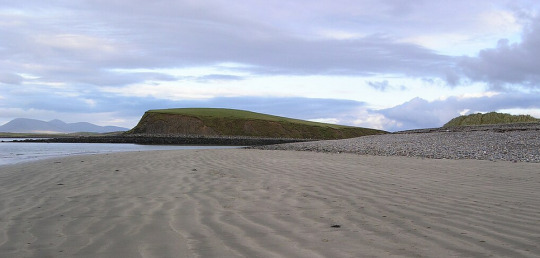
A hill with one steep side, one looooong sloping side, and you've (most likely) got yourself a drumlin. (Unless it's small. Drumlins are tens of meters high and hundreds of meters long, so if you've got a short one with way more elongation, you've got a drumlinoid.) They're all over Canada,the north eastern US, and northern Europe. The one pictured above is in Ireland. The ones in Canada and the US formed as the Laurentide Ice Sheet, a kilometers thick mass of glacial ice, was spreading across North America during the Last Glacial Maximum
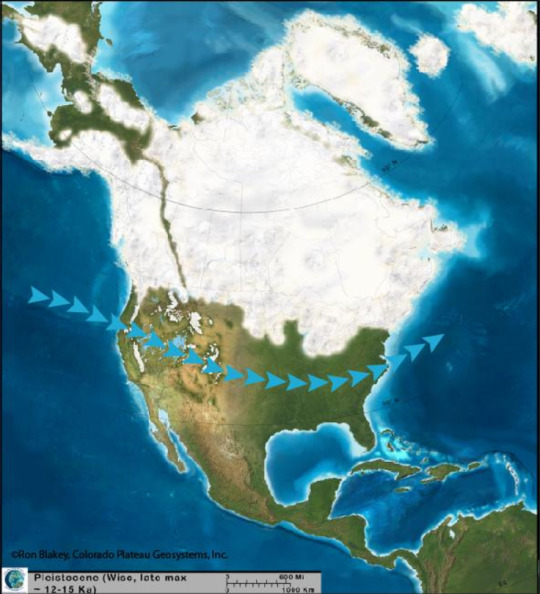
There are lots of really cool glacial landforms (eskers and kames and lakes (Glacial Lake Agassiz my beloved) and like a dozen types of moraine), but drumlins are my favourite because they're so incredibly easy to identify, they occur in swarms, and they're kinda weird as hell
There's still some debate among geomorphologists about how, exactly, they form but I was told that the (mindbogglingly huge mass of) ice catches on a sticky uppy bit of bedrock and instead of mowing it down like a child kicking over a stack of blocks, moves around it instead. And because there's now a place behind the bedrock where there's less ice, the ice drops a whole bunch of glacial till (all the bits of sediment that did get mowed down like a child kicking over a stack of blocks) on the other side of the bedrock bit

(This is a constructional theory, where the drumlin is built up. the other main one is the erosional theory, where everything but the drumlin is eroded. There's also a theory that drumlins are deposited by subglacial meltwater, but that one is highly controversial)
"Now wait," I hear you say, "go back a bit. What the fuck was that about swarms?"
They occur in swarms.

If you've got one drumlin, good chances you've got a lot of drumlins. Which is actually amazing, because the steep side of the drumlin faces the direction of flow, which means we know exactly how the ice sheet moved. In this image, for example, the ice started at the top, near Lake Ontario, and then moved south. From looking at drumlins (and other glacial landforms, we do like to have multiple reference points), we know that the Laurentide Ice Sheet started in the Hudson Bay and crept out from there
And because they're so distinct (tear drop shaped, made of till, occur in swarms), and because drumlins can only have been made by glacial activity, we can look all over the world and find these things and know that this place was once under several thousand tonnes of ice

Not during the Last Glacial Maximum, but definitely ones before it. And I just think that's neat
#'glacial till' I say as if all till isn't glacial#that's only in there for the non-geologists tbh#I love drumlins so much#they're neat#rocks#long post#Loxie has words#geology#geomorphology#These thing can be made of some weird things too#Here in Alberta we're on carbonate rock#because of that ocean that used to be here before BC crashed into us#but we've got granite in our till deposits#which was imported here by the glacier express from Ontario#where the Canadian Shield is exposed#the Shield which is made of granite and other igneous rocks#(we've got granite too but it's buried *deep* beneath the carbonate)
222 notes
·
View notes
Text

Papa Pie was less than pleased once he found out what Sandstone (Pinkie) does for a living.
#mlp fim#mlp g4#pinkie pie#mlp friendship is magic#mlp pinkie pie#mlp redesign#mlp#igneous rock#angst?#it wasn’t a phase#artists on tumblr#edited to add tws just in case#tw emotional abuse#tw abuse
60 notes
·
View notes